Evidence for climate change
Part of:
Convex Seascape SurveyUnderstanding past climate and environmental conditions is crucial for predicting future changes and their potential impacts. However, direct observations of weather and climate are limited to the present and recent past. To gain insights into Earth's climatic history, geoscientists rely on proxy measures, direct measurements, historical documents, satellite sensing, and the principles of paleoclimatology.
Direct Measurements
Direct measurements of climate variables, such as temperature, precipitation, and atmospheric composition, have been recorded using instruments like thermometers, rain gauges, and gas analysers. These measurements provide accurate data but are limited to the time period since the invention of these instruments, typically a few centuries at most.
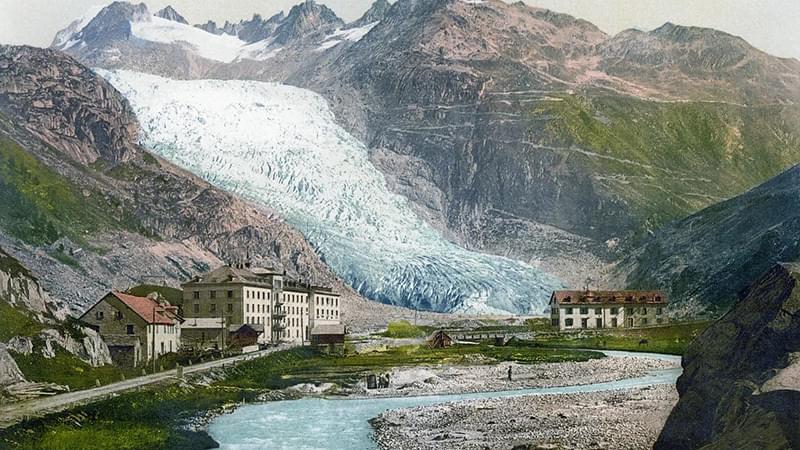
Use of historical documents
Historical documents, such as ship logs, weather diaries, and agricultural records, can provide valuable information about past climate conditions. These records often contain descriptions of weather patterns, extreme events, and their impacts on human activities. For example, the diary of a farmer might mention a particularly harsh winter or a drought that affected crop yields. By analysing these historical accounts, scientists can reconstruct climate patterns and identify trends or anomalies.
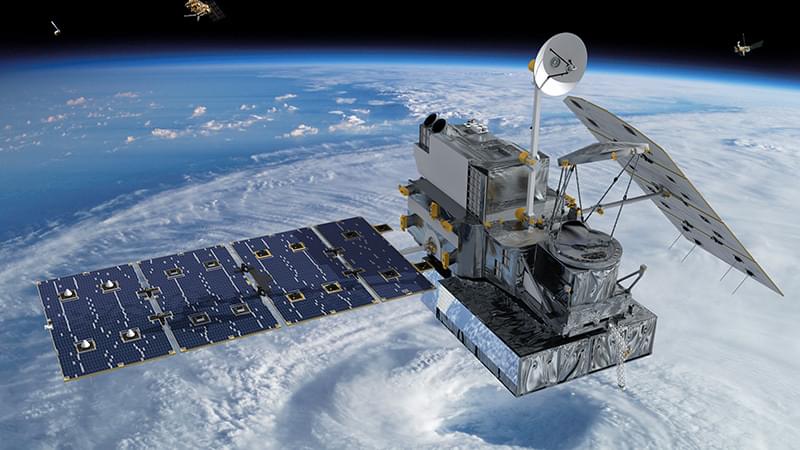 NASA
NASA
Satellite sensing
Since the 1970s, satellites have been used to collect data on various climate variables, such as temperature, sea level, ice cover, and vegetation. Satellite sensors can measure the Earth's surface temperature, track changes in sea level, monitor the extent of ice sheets and glaciers, and detect changes in vegetation patterns. These data provide a global perspective on climate change and allow scientists to study large-scale patterns and trends. However, satellite records are relatively short compared to other proxy measures.
Proxy measures
Proxy measures are measurable factors that can be used to infer past climate or environmental conditions.

Tree rings (dendrochronology)
Trees form annual growth rings that reflect the environmental conditions during their growth. Wider rings indicate favourable conditions (e.g., adequate moisture and warmth), while narrower rings suggest less favourable conditions. By analysing tree ring patterns, scientists can reconstruct climate records extending back hundreds to thousands of years. Cross-dating techniques allow scientists to extend the environmental record by comparing ring patterns of trees of different ages.
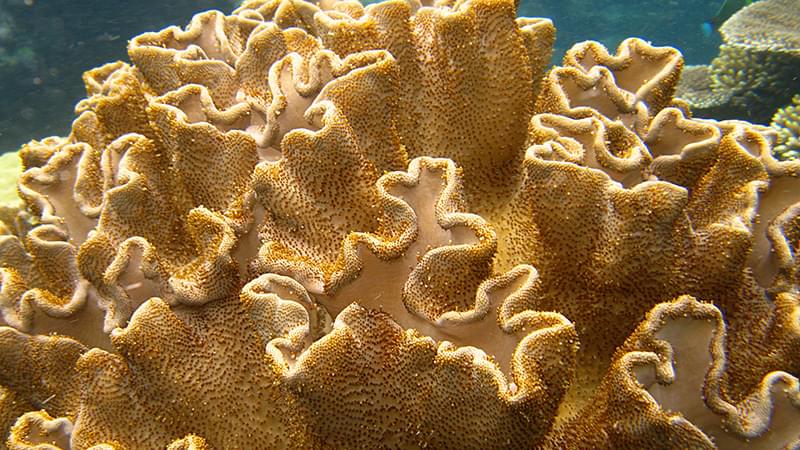 Toby Hudson CC BY-SA 3.0
Toby Hudson CC BY-SA 3.0
Coral Growth Bands
Corals form growth bands that can provide information about past ocean temperatures and other environmental conditions. Variations in band thickness and chemical composition can indicate changes in water temperature, salinity, and nutrient availability.
Proxy evidence within human history
For the past 150-250 years, scientists can use historical records and documents, such as ship logs and journal entries, to gather information about past climate events. For example, the eruption of Mount Tambora in Indonesia in 1816 led to the "Year without a Summer" in Europe, which has been linked to Mary Shelley's writing of "Frankenstein."
Paleoclimatology and core sampling
To investigate climate changes beyond human records, geoscientists rely on the principle of uniformity, which assumes that processes have operated in the same way throughout geological time. They look for "fossil environments" or traces captured and preserved in sediments or ice.
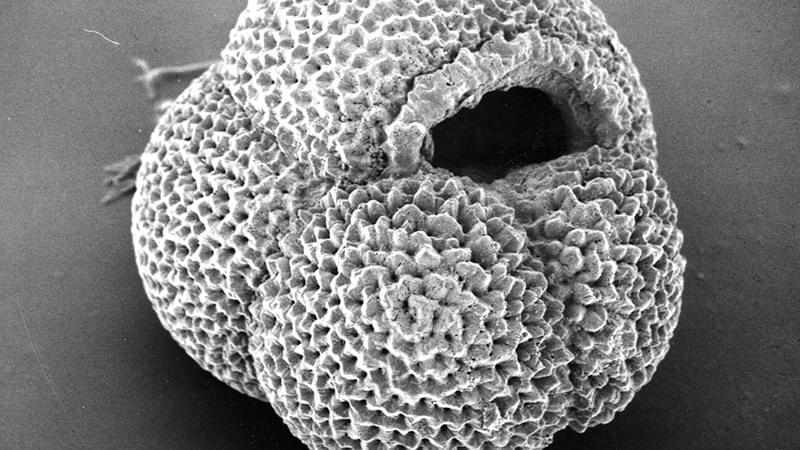 Hannes Grobe / AWI CC BY-SA 3.0
Hannes Grobe / AWI CC BY-SA 3.0
Fossilised remains
Characteristics of fossilised organisms, such as shell chemistry and growth patterns, can provide information about the temperature and chemical composition of the environment when they were alive. Certain organisms can serve as indicators of specific geological periods or environmental conditions. Aquatic organisms with shells, pollen grains, and remains of microorganisms (e.g. foraminifera) are particularly useful as sensitive indicators of past conditions.
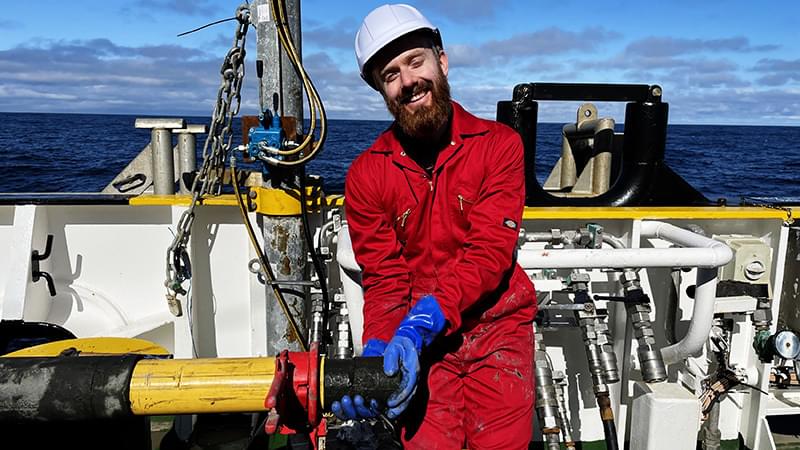 Sea Change
Sea Change
Sediment cores
Geoscientists can extract sediment cores from ancient seabeds or lake beds. These cores provide a sequential record of environmental conditions, with younger material at the top and older material at the bottom. Analysis of indicator species and chemical composition within the cores can reveal past climate and environmental changes. Cross-dating techniques can be used to extend the geological record across different cores and to establish a timeline.
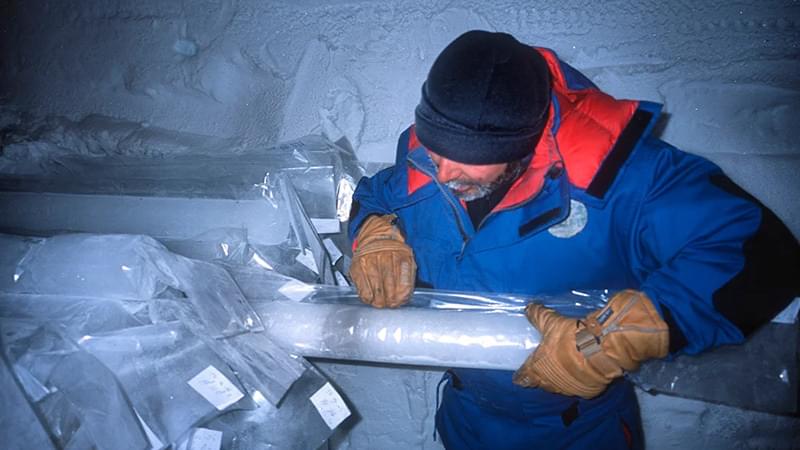 Dargaud CC BY-SA 4.0
Dargaud CC BY-SA 4.0
Ice cores
Ancient air bubbles trapped in ice cores from polar ice sheets contain samples of Earth's past atmosphere. Analysis of the chemical composition of these air bubbles can provide information about past atmospheric conditions, such as greenhouse gas concentrations. Ice cores can offer climate records extending back tens to hundreds of thousands of years.
By combining multiple proxy measures, direct measurements, historical documents, satellite sensing, and applying the principles of paleoclimatology, geoscientists can reconstruct Earth's climatic history and gain valuable insights into the factors that influence long-term climate change. This knowledge is essential for understanding the current climate crisis and predicting future changes in our environment.
